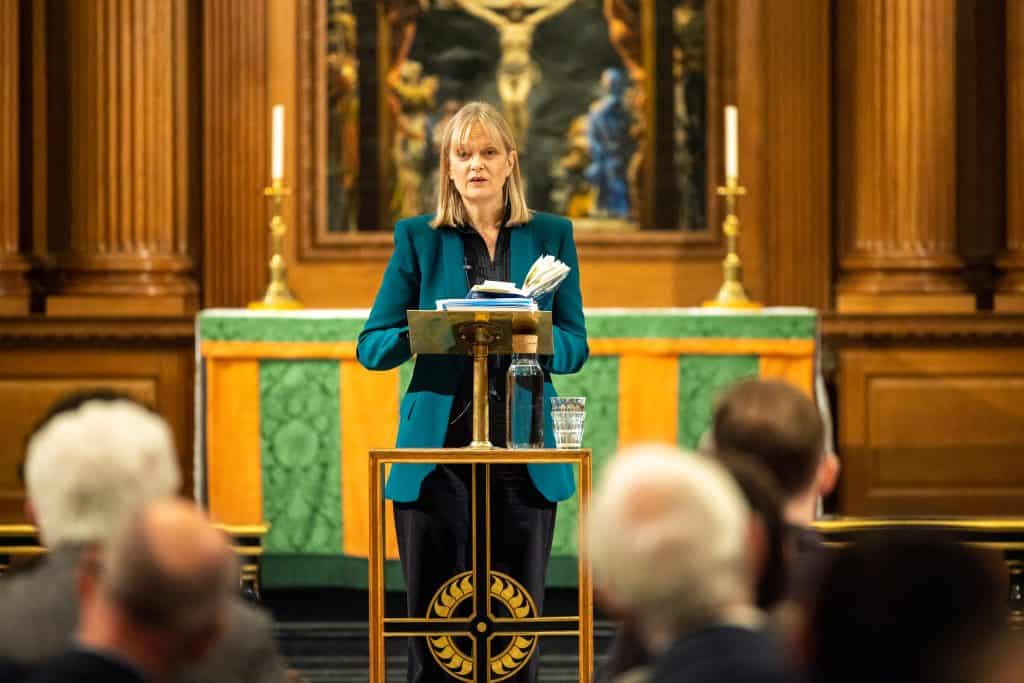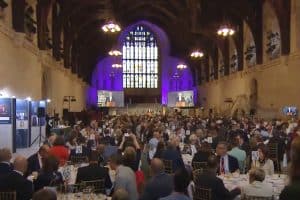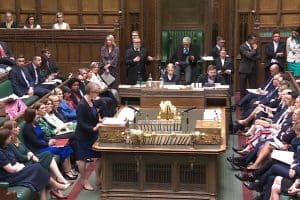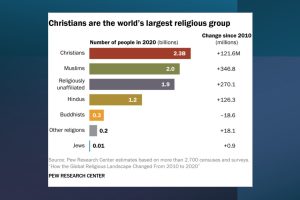A leading academic predicts Britain will see the continuing decline of Christianity, the resurgence of fundamentalism, the rise of non-religion, the emergence of British Islam and a flourishing interest in “magic”.
Professor Linda Woodhead, speaking at the Religion Media Centre’s annual lecture in London, gave the context to the 2021 census results on religion, which are due to be published next month or in November.
She said the census was expected to show a fall in those identifying as Christian in England and Wales — from 72 per cent in 2001, to 59 per cent in 2011, — to perhaps below 50 per cent this time.
Second, she said a steady rise in the number identifying as “none”, having no religion, increased from 15 per cent in 2001, to 25 per cent in 2011, with predictions that this could rise to 33 per cent this time.
And third, a steady rise in the number of those identifying as Muslim went from 3 per cent in 2001 to 5 per cent in 2011, and would perhaps increase to 8 per cent this time.
Woodhead, the F. D. Maurice professor and head of the department of theology and religious studies at King’s College London, has written widely on religion in society.
During her lecture at St Bride’s Church, Fleet Street, she offered four predictions for the future of religion in the coming decades, building on work from the 1970s and 1980s that had proved remarkably prescient.
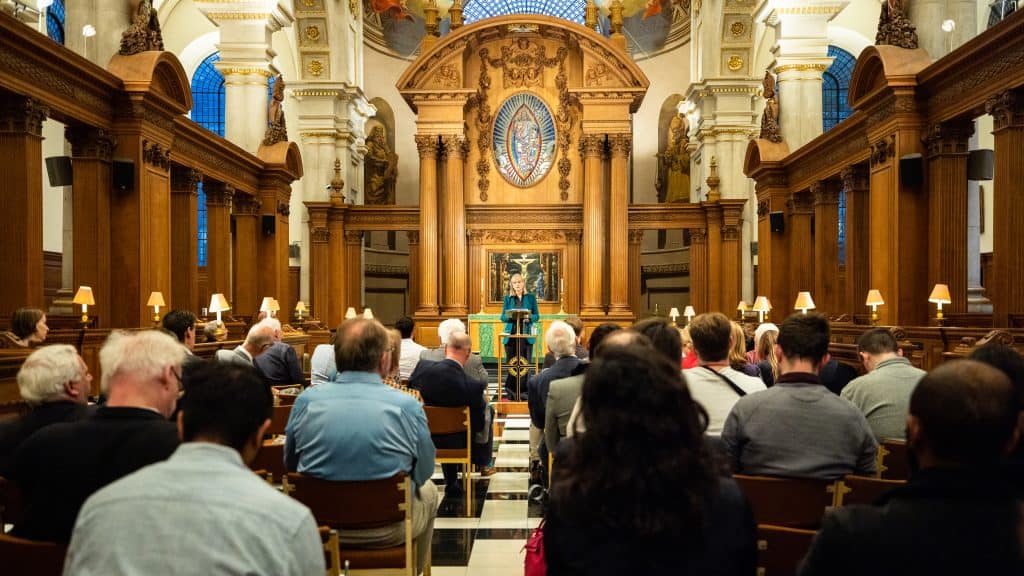
Her method for analysing which religious movements and phenomena would survive, was to judge them against five signs of vitality: intellectual understanding of the metaphysical, continuing institutional practices, community and belonging, ethics and values, and spirituality connecting with the sacred.
She used this method to understand four trends in the religious life of people in Britain, to suggest which would thrive or die. The trends identified are: fundamentalism, winning the battle, but losing the war; Muslims finding their place, or Islam finding its place; magic and the decline of religion; and the fire sale of the churches and the growth of non-religion.
“Fundamentalism has had a fantastic 30 years, maybe 60 years in all the world religions and in virtually all the churches in Britain,” she suggested. Espousing “plain facts” such as the bodily resurrection of Jesus, combined with moral puritanism was inherently exclusive: “We’ve got the truth. You haven’t.”
Fundamentalism had captured the churches — and the media. In many media interviews when she started talking about versions of Christianity, the response of the reporter was that this was “too wishy-washy” and was not real religion.
Fundamentalism had won the battle but lost the war, she said. Revivals had not stemmed the relentless decline of Christianity, in fact the post-war strict moral stands against divorce, remarriage, women’s equality and LGBTQ+ rights had turned Christianity into a toxic brand and the next generation did not want to be associated with it.
There had been a failure of liberal Christianity to provide an intellectual theology, credible answers on matters of belief, so it had lost its cultural capital. She said Christians in this country were just as liberal in their ethics as the general population: Anglicans were indistinguishable from the general population in their ethical views on such issues as euthanasia, divorce, and abortion. But their leaders were reacting against ideas that were absolutely dominant.
Another trend, she explained, was the “fire sale” of the “cultural property” of the churches and the growth of non-religion.
This meant that different secular organisations had siphoned off work in education and knowledge. Other providers had offered similar services, not connected to a religious name. The churches’ rituals, values, beliefs, practices, community had come apart.
Challenged to state the importance of faith action on the front line of welfare support, for example after the Grenfell tower fire, she said this function was a charitable role and not a lot to do with religion.
Charities with religious foundations had tried to wipe this from their branding. Association with faith caused charities problems of legitimacy with the statutory authorities, funders and their beneficiaries, whose fear of proselytization or conversion had to be overcome.
But it was the very serious failure over values that indicated the decline of Christianity would continue.
“For a majority religion to offend deeply against people’s moral sensibility — that’s a very, very serious failure. The churches have failed so dramatically as moral authorities, with the abuse scandals being just the latest nail in that coffin.”
– Professor Linda Woodhead
Professor Woodhead observed that the result was a free-for-all in the area of values leadership, with schools, businesses and universities publishing values statements and then trying to embody and enforce them.
Queen Elizabeth II was a valued leader of much greater stature than any Christian leader in the country, she said. It was a big question as to how self-sacrifice and love of others would be underpinned after her death.
Into this void created by failures over morals and new providers taking away work, non-religion had grown. It was just a label used in surveys and the census, the professor said. Its meaning could be gleaned by looking at the context in which it developed from 1992 to date.
Professor Woodhead did, however, identify two areas of strong growth over the next decades. One is British Islam, or British Muslims, finding their place.
She said Islam in Britain was not really visible until the 1970s. The first generation from south Asia had to create their infrastructure from scratch — mosques, halal butchers and schools. The second generation set up civil society organisations and charities.
Now British Muslims were finding their voice with Muslim MPs and confident young people entering higher education, mixing with the many different ethnic Muslim communities and creating a new cultural kind of British Islam with food, clothing, music, and creative places.
“British Muslim cultural output is cool around the world and is getting a global profile,” she said. On her list of how to judge whether a movement had vital signs, she said British Islam ticked all the boxes for community, institutions and spirituality.
The key challenge was keeping it intellectually healthy. There were now centres of Islamic studies in many universities, with moves to study metaphysics and theology, and not just Islamic law.
Asked about fears that a rise in the British Muslim population would stoke a backlash with alarmist headlines, Professor Woodhead said: “It’s about becoming the most vital part of religion in this country. That’s a very frightening prospect to a lot of people who don’t know about Islam.”
And finally her prediction is for the continuing fascination and flourishing of magic — fairy beliefs, ghosts, omens, popular prophecies, village healers, wise women, souls and the afterlife — alongside a decline in religion.
She said: “More of my students and Gen Z as a whole are actively interested in astrology and tarot. They access it on apps on their phone. And those who want to go deeper into intellectually read widely, they listen to podcasts, they go to festivals, they might join a pagan group or a Wiccan group.”
Such fascination had probably been there in every society in every age. But the difference now was that it had lost its stigma. People spoke to one another about it. “Paganism has grown and diversified and created lots of different sub-cultures, both right wing, and left wing, and it’s vital and many young people are involved,” she said.
“Paganism has grown and diversified and created lots of different sub-cultures, both right wing, and left wing, and it’s vital and many young people are involved”
– Professor Linda Woodhead
Professor Woodhead has noticed that magic has crept into the wider culture, with words like chi, spirit, energy in common use. The word for death has changed: now it is “passing”, a spiritualist word. Angel statues in graveyards have been joined by butterflies signifying new life, windmills so the spirit can catch the soul, with “dream-catchers” hanging in trees.
She predicted that magic would continue to be vital and, on her tick box assessing the strength of religion, it was strong in most areas.
Magic was ridiculed for being superficial and shallow but, she said, the reverse was true. It was the subject of deep reflection and was much better dealing with evolution or science and cosmology, using ideas around cycles of birth and death, life and growth. Everything was energy. The planet was Gaia.
“My thesis is that about one in five, about 20 per cent of people, in any generation, in any era in any society other than where there is religious repression, are devoutly interested engaged in religion, magic or spirituality. And it doesn’t ever really change. I think they were always in minority. And I think they will always continue to be in minority.”

